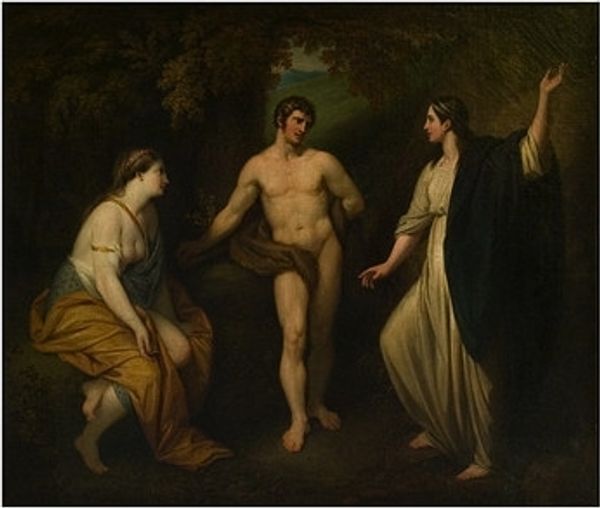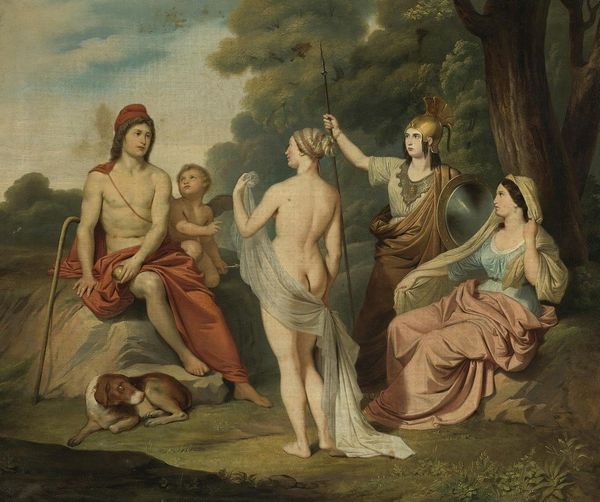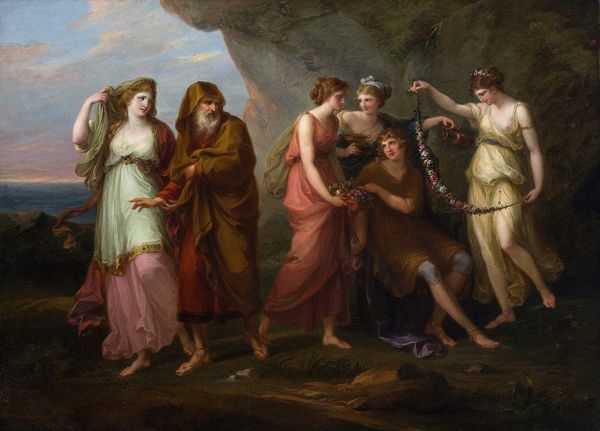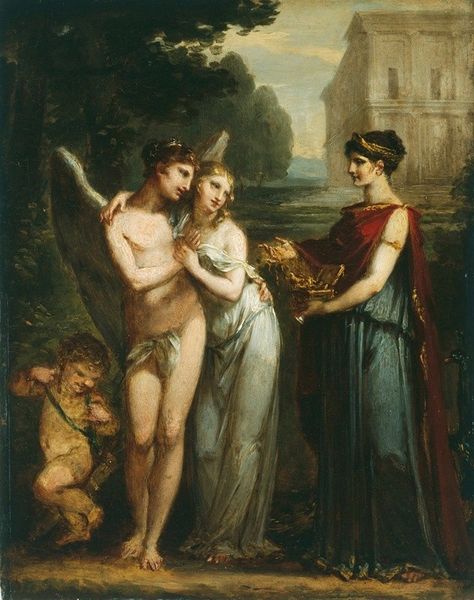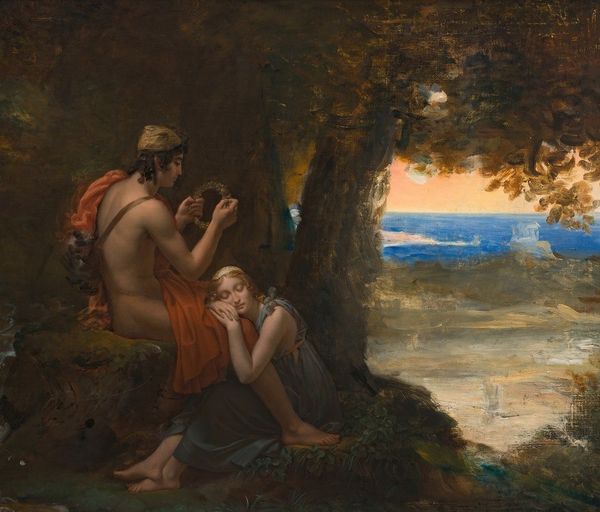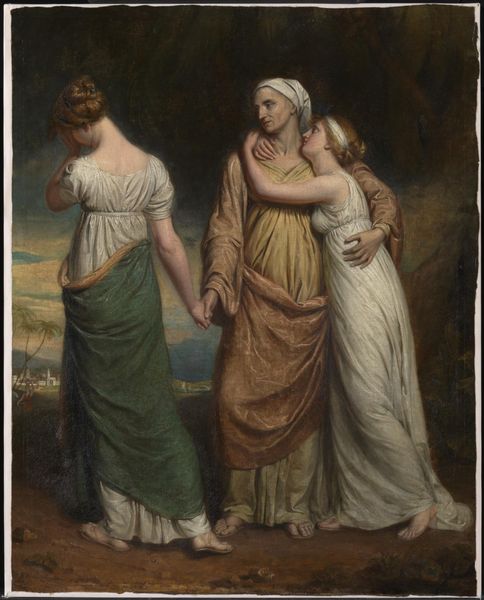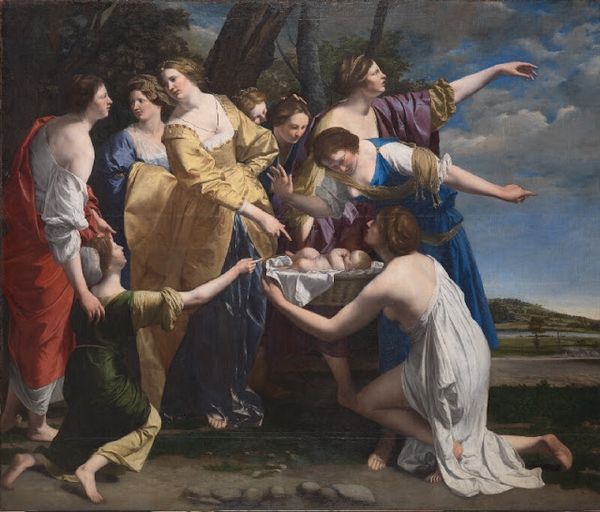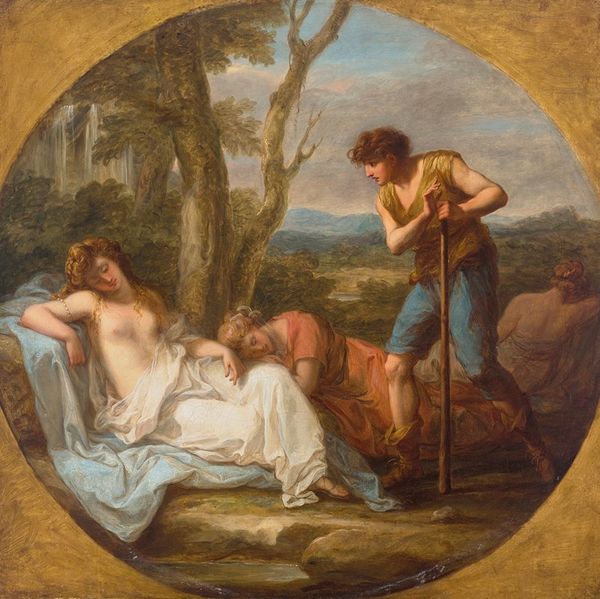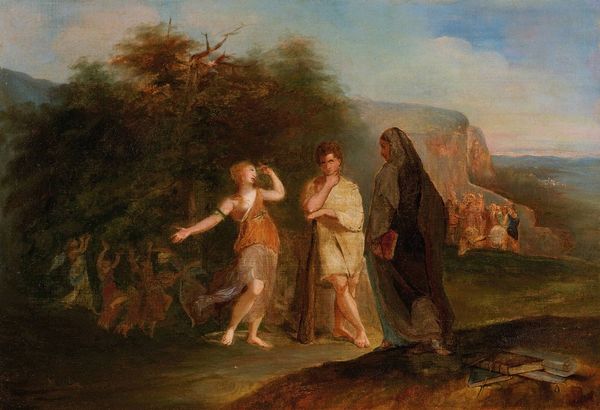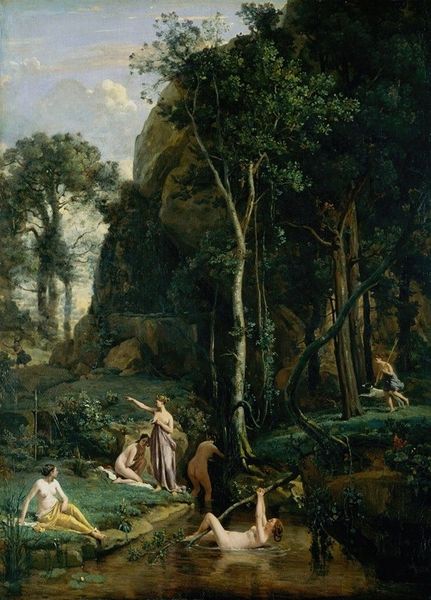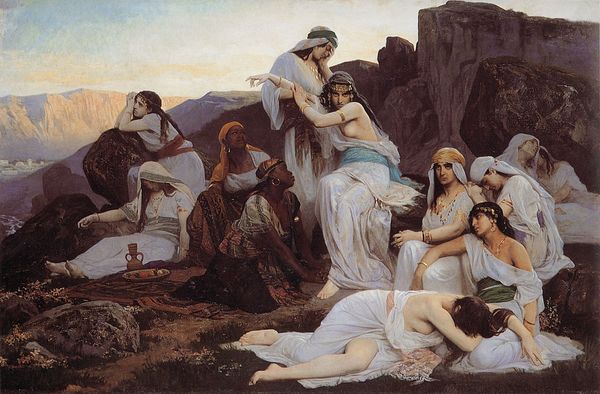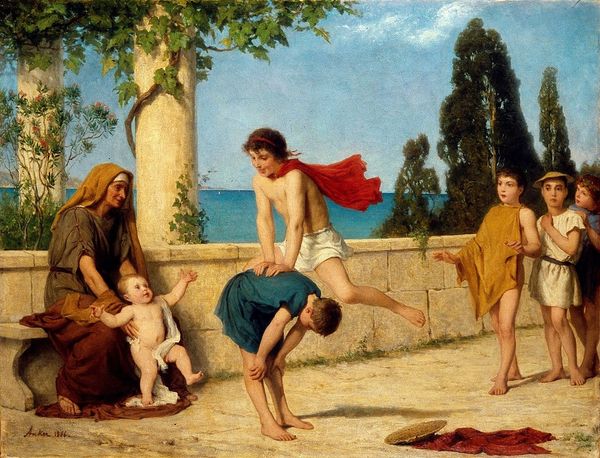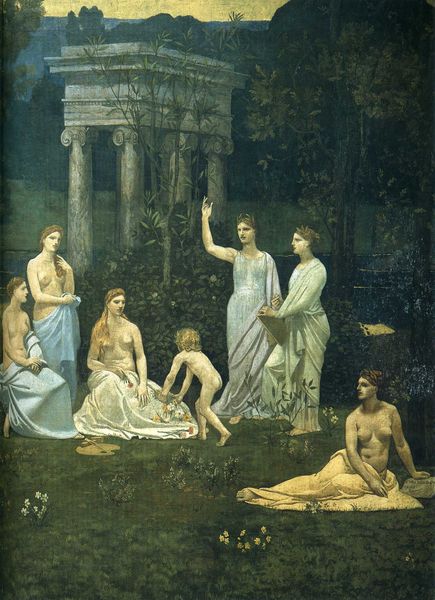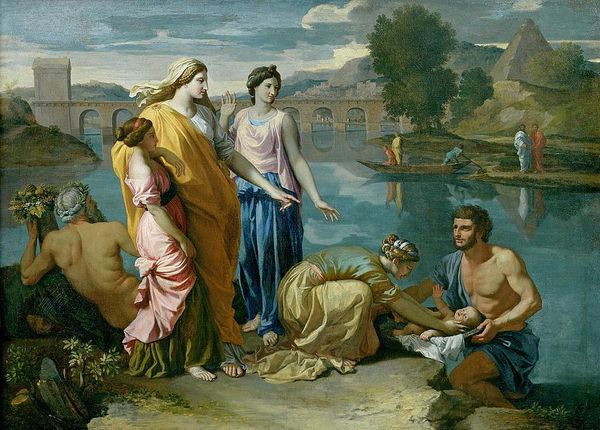
painting, oil-paint
#
neoclacissism
#
narrative-art
#
painting
#
oil-paint
#
greek-and-roman-art
#
landscape
#
figuration
#
mythology
#
history-painting
#
academic-art
#
nude
Copyright: Public Domain: Artvee
Curator: Wilhelm Marstrand painted this piece, entitled "Nausikaa brings the shipwrecked Odysseus clothes" in 1835, using oil on canvas. Editor: My initial thought is that it's quite cold; look at the somber, almost icy palette he uses, particularly in the distant mountains. The women are draped in colours that feel heavy, despite the lightness implied by the neoclassical style. Curator: It adheres closely to Neoclassical conventions: the composition is balanced, and the figures are rendered with idealized forms, their drapery creating strong, clean lines. It clearly references ancient Greek and Roman art through subject matter and style. What do you make of that clear stylistic intention? Editor: It’s fascinating how he approaches the body itself as a kind of material, but contrasts this rendering with the unidealized materiality implied through other textural aspects—the rough, almost granular rendering of the rockface or the facture of the clothing. Are we meant to examine the relationship between these social spheres of human craft, body, and nature itself? Curator: The use of contrapposto and the carefully constructed arrangement of figures certainly emphasizes its self-conscious engagement with classical forms. Note how Marstrand uses light and shadow to create depth and to draw the viewer’s eye towards the central exchange between Nausikaa and Odysseus. Editor: Absolutely. The clear class distinctions subtly presented by clothing production practices can’t be missed, though: Look at Odysseus; he's literally holding foliage to maintain a degree of modesty. It really makes one question: who made the fine materials, who uses them, and for whom? Curator: Perhaps it’s also reflecting on societal tensions present in the 19th century. The artist uses myth, specifically, Homer's Odyssey, as a narrative framework to consider moral and philosophical themes regarding civilization and humanity's basic state. Editor: The classical forms seem like they’re doing more than paying homage, though, if we interpret them as a form of artifice masking deeper reflections on labor. Thank you for these insights. Curator: A pleasure, the close formal analysis really clarified it all for me too.
Comments
No comments
Be the first to comment and join the conversation on the ultimate creative platform.
